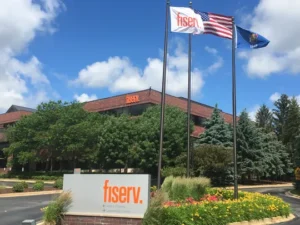How Starbucks, Target, and Even Omaha Steaks Act Like Banks
Everyday consumers—and certainly not experienced bankers— would not typically consider Starbucks, Target, or Omaha Steaks as financial institutions. But the numbers suggest they should. Each of these retail and hospitality brands is managing a growing pool of prepaid balances—gift cards, digital wallets, loyalty credits—that remain unredeemed for months or even years.
These stored-value liabilities function much like consumer deposits: zero-interest capital that can be reinvested, redirected, or quietly eroded by breakage. It’s not banking in the regulatory sense, but it’s certainly finance-adjacent. And for financial services professionals watching the rise of embedded finance and alternative payment ecosystems, the implications are worth understanding.
Starbucks: America’s Favorite Coffee Bank
An April 2025 MarketWatch story estimates that Starbucks is managing nearly $1.85 billion in stored-value balances through gift cards and loyalty accounts as of early 2025. These cards comprise funds that customers have essentially “loaned” to the company interest-free. Their balances are recorded as deferred revenue, a liability that remains on the books until redeemed for beverages, merchandise, or food items.
The article also notes that Starbucks recognizes breakage revenue—balances deemed unlikely to be redeemed—after a period of inactivity. In fiscal 2024, Starbucks reported $187.6 million in breakage revenue from company-operated stores and an additional $20 million from licensed locations.
This float is meaningful. As noted by business site The Fifth Person, Starbucks is “…not a bank, but it sure looks like one,” operating a system where consumers prepay for products, and the company holds the capital, deploys it, and eventually delivers goods, often long after the revenue is booked.
Target: The Department Store Depository
Target’s 2024 annual report notes the retailer as holding more than $1.2 billion in gift card liabilities on its books, which it similarly records as deferred revenue. As with Starbucks, a portion of those balances is eventually recognized as breakage, based on redemption patterns and historical data.
Target doesn’t just rely on this system for holiday promotions, it’s built into the core of its loyalty and payments strategy. Gift cards create liquidity, customer stickiness, and—until used—operational cash flow that doesn’t require borrowing.
As explained in the company’s 10-K filing, breakage is recognized in proportion to the redemption pattern of similar cards and helps to “smooth” revenue recognition over time.
Dunkin’: When Float Meets Legal Risk
While Starbucks and Target have leaned into the benefits of float, Dunkin’ has encountered some legal turbulence. As reported by Top Class Actions, a 2023 class-action lawsuit alleged that Dunkin’s refusal to refund balances under $5 on gift cards violated state consumer protection laws.
The lawsuit highlights the legal and reputational risks associated with gift-card programs. Dunkin’s stored-value system is widely used, but critics argue that policies around small residual balances—especially if not refunded—can unfairly trap consumer funds and enrich the company via breakage.
This disconnect underscores the fine line between loyalty-driven prepaid systems and the expectations of financial fairness normally reserved for regulated institutions.
Omaha Steaks and Wild Fork: Specialty Retailers with Silent Float
Not all participants in this financial-lite ecosystem are quick-service, carry-out brands. Specialty food retailers like Omaha Steaks and Wild Fork Foods also deploy gift-card strategies that give them de facto control over customer cash.
According to Omaha Steaks’ terms of use, its gift cards are nonrefundable and can be used indefinitely. That translates into a form of indefinite float—a pool of prepaid capital that leaves the company only when the customer decides to redeem. Given Omaha’s premium pricing and strong gift-giving brand identity, the unredeemed balance likely has financial weight, even if undisclosed.
Similarly, Wild Fork’s e-gift card policy states that cards are nonrefundable and can be redeemed only for products—not converted back to cash or transferred to another wallet. This ensures that all prepaid balances remain within the company’s ecosystem, preserving working capital and reducing revenue volatility.
Retailers as Financial Players: Key Similarities with Banks
Each of these brands leverages prepaid instruments in ways that resemble financial institutions by:
- Collecting funds in advance, creating interest-free working capital.
- Managing liability over time, recognizing revenue as gift cards are redeemed or expire.
- Benefitting from breakage, turning consumer inertia into profit.
- Operating without regulatory scrutiny, aside from state-level escheatment and disclosure laws.
PaymentsJournal cites that these balances are treated as liabilities under ASC 606 accounting rules, but breakage is typically “…estimated based on historical redemption patterns and recognized into income over time.”
This behavior may not resemble banking in structure, but it certainly echoes banking in function. That should matter to financial services professionals exploring embedded finance, stored-value ecosystems, and customer acquisition strategies.
Bank Strategies for a Shifting Payments Landscape
For banks, the expansion of stored-value systems in retail presents both risk and opportunity.
The Disintermediation Threat: Why “Shadow Wallets” Matter
The risk is disintermediation, consumers are increasingly holding funds in “shadow wallets”: nonbank platforms such as Starbucks apps, retailer loyalty programs, and fintech e-wallets. Together, these vehicles account for over $400 billion in stored value globally. They are frictionless, reward-rich, and deeply embedded in consumer behavior.
“Retailers don’t need banking licenses to behave like banks,” the report states. “They just need scale, trust, and a digital relationship.”
Partnership Potential: Banks as Embedded Finance Enablers
Opportunity lies in partnership. As Cornerstone Advisors states in its 2023 report, banks have begun white-labeling prepaid infrastructure and APIs to merchants and fintechs, enabling cobranded wallets or store-specific reloadable cards. Ron Shevlin, Chief Research Officer at Cornerstone, argues that traditional FIs must “…stop thinking like bankers and start acting like enablers.”
Banks could serve as the backend for stored-value programs, offering FDIC-insured rails, compliance oversight, and reconciliation infrastructure that retailers currently lack.
Forrester Research cites that 57 percent of U.S. banking executives now view embedded finance as a “strategic growth vector,” particularly in underserved or adjacent verticals like hospitality, travel, and specialty retail.
As the boundaries between commerce and finance blur, the biggest risk for banks isn’t competition from Omaha Steaks—it’s complacency. Consumers are already shifting where they “store” money. The only question is whether banks will power that shift. Or be left out of it.



















